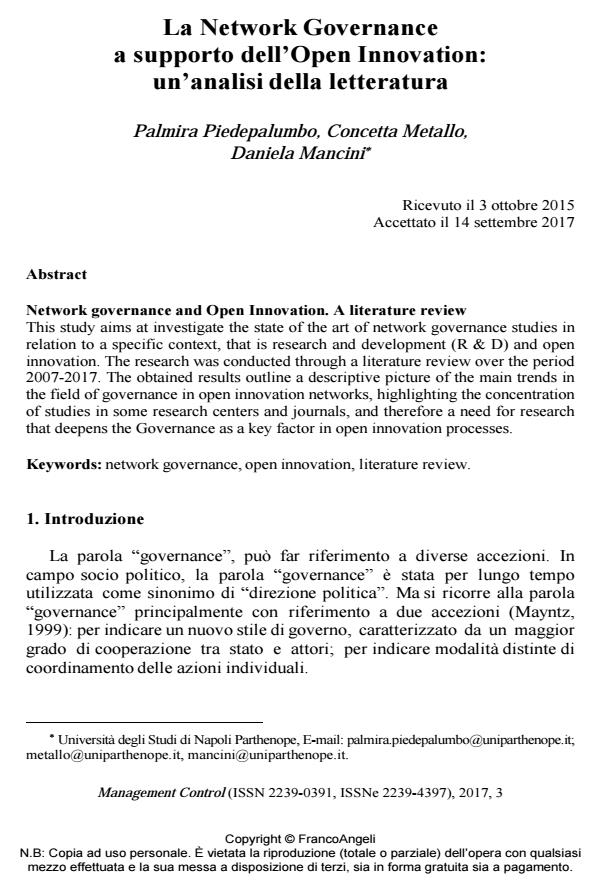La Network Governance a supporto dell’Open Innovation: un’analisi della letteratura
Titolo Rivista MANAGEMENT CONTROL
Autori/Curatori Palmira Piedepalumbo, Concetta Metallo, Daniela Mancini
Anno di pubblicazione 2017 Fascicolo 2017/3
Lingua Italiano Numero pagine 16 P. 79-94 Dimensione file 242 KB
DOI 10.3280/MACO2017-003006
Il DOI è il codice a barre della proprietà intellettuale: per saperne di più
clicca qui
Qui sotto puoi vedere in anteprima la prima pagina di questo articolo.
Se questo articolo ti interessa, lo puoi acquistare (e scaricare in formato pdf) seguendo le facili indicazioni per acquistare il download credit. Acquista Download Credits per scaricare questo Articolo in formato PDF

FrancoAngeli è membro della Publishers International Linking Association, Inc (PILA)associazione indipendente e non profit per facilitare (attraverso i servizi tecnologici implementati da CrossRef.org) l’accesso degli studiosi ai contenuti digitali nelle pubblicazioni professionali e scientifiche
This study aims at investigate the state of the art of network governance studies in relation to a specific context, that is research and development (R & D) and open innovation. The research was conducted through a literature review over the period 2007-2017. The obtained results outline a descriptive picture of the main trends in the field of governance in open innovation networks, highlighting the concentration of studies in some research centers and journals, and therefore a need for research that deepens the Governance as a key factor in open innovation processes.
Parole chiave:Network governance, open innovation, literature review.
Palmira Piedepalumbo, Concetta Metallo, Daniela Mancini, La Network Governance a supporto dell’Open Innovation: un’analisi della letteratura in "MANAGEMENT CONTROL" 3/2017, pp 79-94, DOI: 10.3280/MACO2017-003006